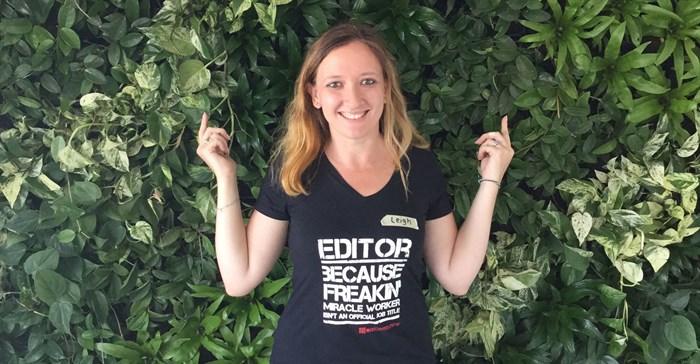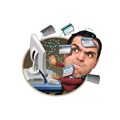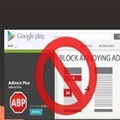#BizTrends2018: Rewind from attention spam back to attention span

I hate to be the harbinger of bad news but for consumers, today’s ease of communication paints a scary, overwhelming picture. Research differs on the exact benchmark, but all agree we’re facing thousands of messages per day from friends, family, colleagues, clients and brands, everywhere we look.
Joshua Saxon of the IE School of Human Sciences & Technology writes for the American Marketing Association that consumers switch between screens up to 21 times an hour according to a British study. Take that in. With our consumer hats on, we’re completely switching our attention every few minutes. No wonder the human attention span is said to have dropped to less than that of a goldfish. Not exactly a case of evolution at its finest.
The once idealised ‘inbox zero’ is a thing of the past, as we receive messages on so many platforms each day that you’re bound to see the little red notification tag wherever you’re trying to concentrate. It’s disruptive marketing at its best – or rather, at it’s worst. There’s been a drastic rise in the uptake of pop-up ads and auto-play video features, with in-video ads the latest social media bugbear.
And that, my friends, is the definition of attention spam (no, not the canned meat). Urban Dictionary sums it up as follows:
Unfortunately, that also sounds like the definition of the bulk of marketing messages today.
Consumers may read your messages, but will they respond?
Even what was once seen as private personal communication is up for grabs to the highest bidder. We now have advertisers on WhatsApp and PRs that can reach the media at any time, any place to pitch breaking stories. They also know that their Thursday, 2am or Sunday, 8pm message has been read, thanks to the advent of the ever-handy Whatsapp blue tick and Facebook Messenger circles.
Let’s not even think about the AI/tech-implant implications – then they’ll know your location too.
For brands and marketers, this means finding the real firework idea that grabs attention – and not only that, as the rise of purpose-led marketing means consumers will only pay attention if your messaging stands for what they stand for. Mere product punts just won’t cut it in 2018.
Megan Jones elaborates on AdWeek:
If your branded content doesn’t resonate with your targeted audience, you have failed.Here’s how to ensure your campaigns succeed:
Personalise user experience, go native
At the end of the day, it’s still all about the user experience or UX.
Alexandre Forster of Twipe Digital Publishing recently investigated the impact of ad-blocking on UX, using what most Western online scrollers have at their disposal: Chrome extensions Disable HTML5 Autoplay and uBlock Origin. He activated these on the LA Times’ website, which is often referenced as a textbook case of how ads can worsen a user experience.
Forster compared loading time and data usage with ads and autoplay off, and then on. The results? With ads and autoplay blocked, a typical article page took 3.2 seconds to load and used 58.7KB of data. With all the ads and video-enabled, these values increased to 22.53 seconds and 5.5MB – seven times longer and nearly 100 times more data.
According to the most recent The state of the blocked web 2017 Global Adblock Report by PageFair, adblocker penetration in SA is fairly low, but that’s set to rise, especially as Fin24 Tech has reported that at least a fifth of your mobile data is consumed by advertising! With time, data and attention at a premium in 2018, little wonder consumers are turning to ad-blockers and scrolling past whenever they register what they deem as an ad or spam.
SA-based performance digital marketing consultancy BlueMagnet points out that ad-blocking technology is many a disgruntled social media scroller’s new best friend.
But it’s not necessarily the death knell for marketers. In fact, BlueMagnet states 2018 digital marketing strategies can survive the snowballing trend of ad-blocking technology on Facebook and YouTube in particular as the platforms’ focus on personalised UX means they’ve built features that can disable ad-blocking. How meta is that – you can disable the apps your potential customers are trying to use to disable those ads!
This means the ads shown and re-targeted to those overwhelmed users are only done so where the user is already heavily invested, replacing the ‘WTF, why am I seeing this’ response with one of: ‘Oh cool, I’ve been meaning to find out more about that product/service. Let me click through…’
Another tactic is to create content that doesn’t feel like an ad – yes, native video content. Entrepreneur India predicts this trend will rise over the coming months due to its “engaging and personalised layout”, with the added benefit of being undetectable by ad blockers as it's formatted according to the platform where the ad is hosted, so blends in with the organic content. If it doesn’t look like an ad, it’s more likely to keep your customer’s attention as it seamlessly slots in with the content they visited the page for.
That’s a true marketing win in today’s attention spam era that may well lead to the ultimate end-goal of conversion. Onwards, 2018!






























